Photos: Egg farm
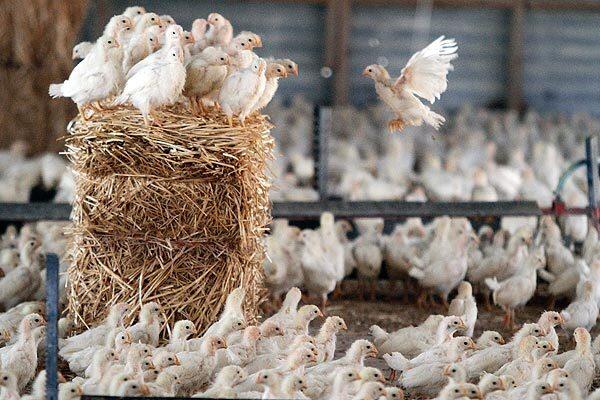
Four-week old Leghorn hens flutter around a barn at Armstrong Egg Farms in Valley Center, Calif. Testing and vaccinations during the average two-year lifespan of an Armstrong hen add about 8.5 cents to the cost of each bird. Such a seemingly small sum can mean the difference between profit and loss for egg farmers. (Don Bartletti / Los Angeles Times)
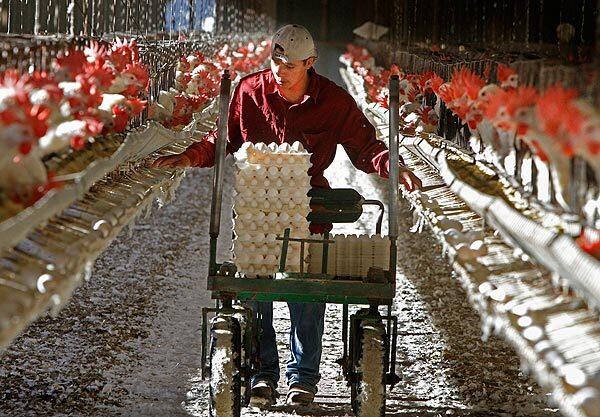
Francisco Jimenez Cruz gathers eggs at Armstrong Egg Farms in Valley Center, Ca., in north San Diego County. (Don Bartletti / Los Angeles Times)
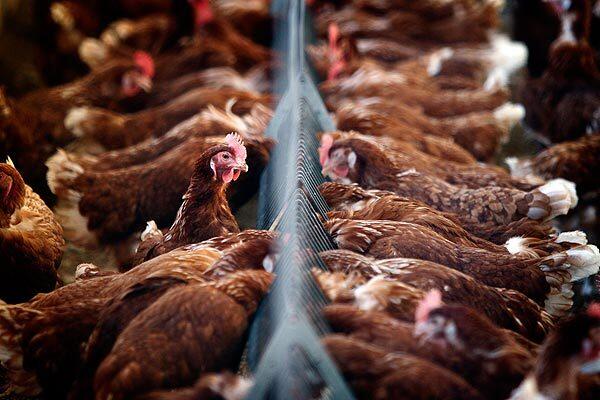
Road Island Red hens feed in one of the cage-free chicken houses at Armstrong Egg Farms. (Don Bartletti / Los Angeles Times)
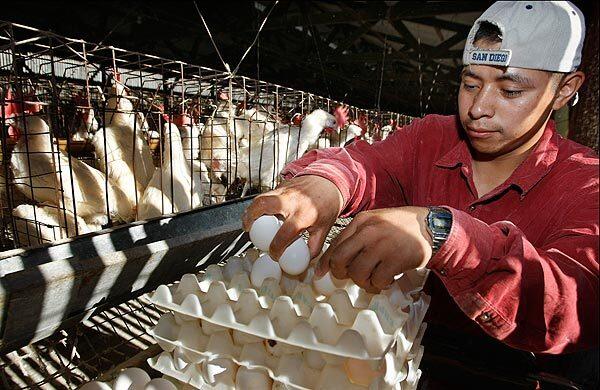
Francisco Jimenez Cruz puts fresh-layed eggs in a tray at Armstrong Egg Farms in Valley Center, Calif., which keeps 450,000 hens. (Don Bartletti / Los Angeles Times)
Advertisement
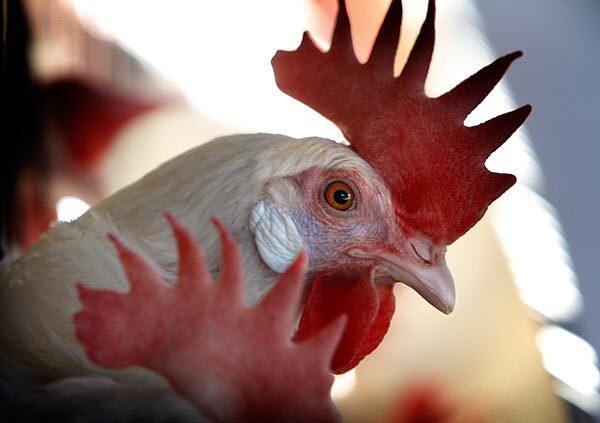
A Leghorn hen peers out from a cage at Armstrong Egg Farms. (Don Bartletti / Los Angeles Times)
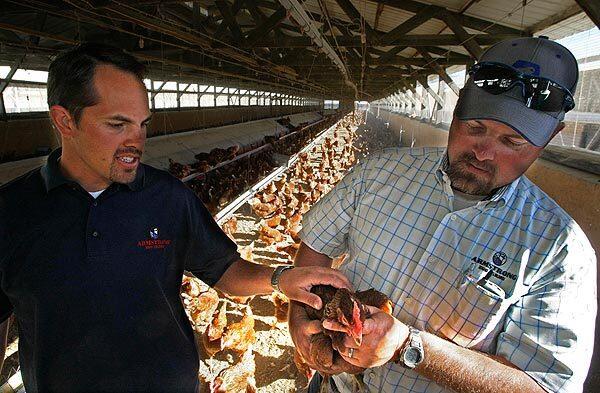
Brothers Ryan, left, and Alan Armstrong own Armstrong Egg Farms in Valley Center, Ca. They follow a testing and vaccination program that, while virtually eliminating salmonella in California henhouses, has made their eggs more expensive than outside competitors’. (Don Bartletti / Los Angeles Times)
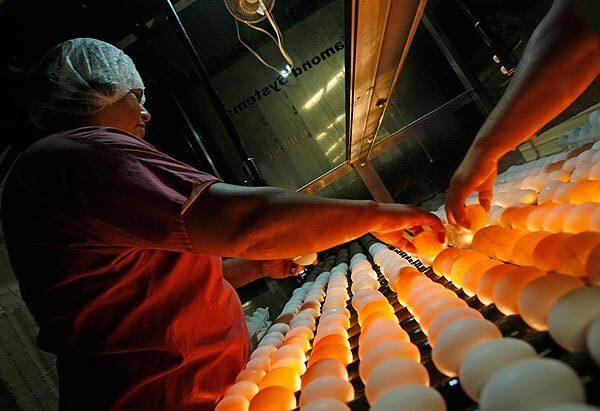
Aida Garcia looks for flaws in fresh eggs moving along an illuminated conveyor at Armstrong Egg Farms. (Don Bartletti / Los Angeles Times)
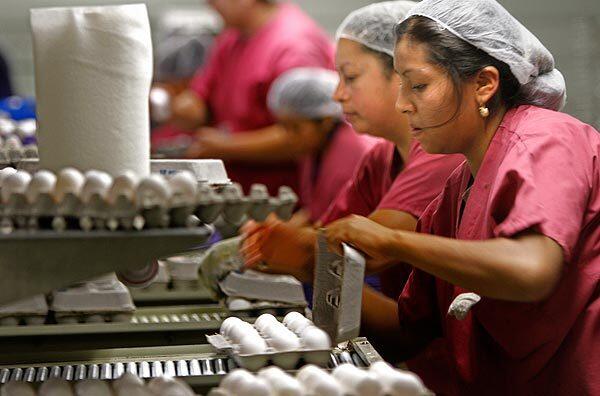
Boxed fresh eggs get one final inspection at the end of the processing line at Armstrong Egg Farms. (Don Bartletti / Los Angeles Times)
Advertisement
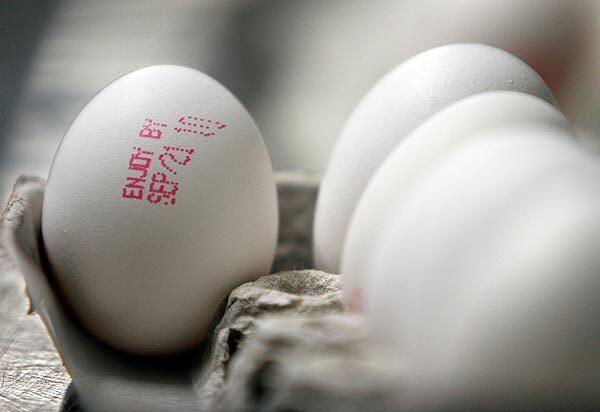
Eggs stamped with their “use-by” date await shipping to market at Armstrong Egg Farms in Valley Center, Calif. (Don Bartletti / Los Angeles Times)







